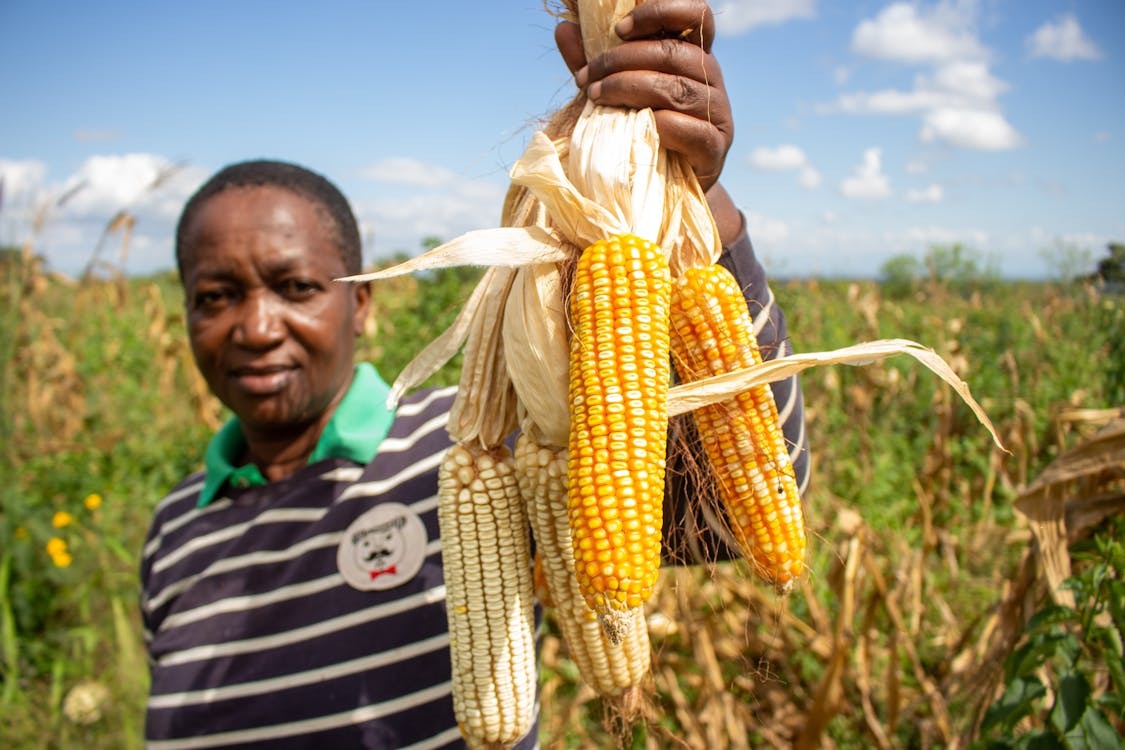For many farmers across the southwestern states, especially those who planted maize earlier in the year, harvest season is already in full swing. And honestly, there’s nothing like that feeling—watching those full cobs come off the stalk, knowing the months of hard work, sweat, and prayer have paid off.
Now, while some people grow maize mainly for family consumption (subsistence farming), many others do so with a clear goal: to earn a profit (commercial farming). Whether to fulfill personal or family responsibilities, restock the farm, or just turn in a decent profit, farming is business. And if that’s your mindset, then this blog is especially for you.
Let’s walk through 5 key steps you should take right after harvesting maize to protect your yield, maximize profits, and prepare for the next cycle.
1. Proper Drying – Don’t Let Moisture Ruin Your Effort
Freshly harvested maize contains a lot of moisture—usually between 18% and 30%. If not dried properly, it can develop mold or aflatoxins (toxic compounds that make the maize unsafe for consumption and unfit for market). That’s money lost and health risks introduced.
What to do:
- Sun-dry your maize on clean, dry surfaces (like tarpaulin, mats, or concrete floors). Avoid drying directly on bare ground—it can contaminate the grains.
- Spread it thinly and turn regularly for even drying.
- Aim for a moisture content of about 13% for safe storage. You can use a moisture meter (handheld ones are quite affordable now) or perform a bite test if you’re very experienced with the process.
- If you’re drying on a large scale or during rainy season, consider mechanical dryers or drying services where available.
2. Keep It Neat, Keep It Market-Ready
Once the maize is dry, the next step is to remove the kernels from the cob, a process called shelling. For small farms, manual shelling (using hands or hand-held shellers) might work. However, larger farms should opt for mechanical shellers to save time and reduce grain breakage.
After shelling, ensure that you clean the maize to remove dust, chaff, stones, or broken kernels. A simple sieve or blower can go a long way.
Clean, well-shelled maize not only looks better, but it also fetches better prices and reduces the risk of spoilage during storage.
3. Store Properly to Protect Your Hard-Earned Harvest
Don’t just dump your maize into sacks and forget about it. Post-harvest pests like weevils and rodents can wreak havoc if you’re not careful.
Best practices:
- Use clean, dry, and airtight bags (preferably polypropylene or hermetic storage bags like PICS bags).
- Store in a cool, dry place, off the ground and away from direct sunlight or rain.
- Consider treating maize with natural preservatives like neem leaves or food-safe pesticides if you’re storing it for a long time.
- For bulk storage, invest in metal silos or grain banks.
Pro tip: Always label your storage bags with the harvest date, moisture level, and treatment (if any). This helps you monitor and rotate stock.
4. Timing is everything!
Now that your maize is safe, you need to decide: sell immediately, store for better prices later, or add value?
If you chose option A (sell immediately):
This is common during harvest season but often yields lower prices due to market glut.
- If you must sell, compare prices across buyers—local markets, aggregators, processors, and even online platforms.
For the second option B (storing to sell later):
Prices may go up after the harvest season. If you have secure storage, waiting a few months may significantly increase your income.
For option C (processing/value addition), here are a few ideas if you want to earn more and maybe explore agribusiness:
- Process maize into flour (pap/ogi), animal feed, or grits.
- Package and brand your products for local or urban markets.
- Even simple cleaning, grading, and bagging can add value.
5. Start Planning for Next Season Now
Many farmers wait until the rains are almost here before thinking about land preparation. That’s a big mistake. What you do between harvest and the next planting season often determines how successful your next harvest will be.
Key post-harvest field activities:
- Clear the residue: Dry stalks and roots should be removed or ploughed back if you’re practicing conservation farming.
- Soil testing: Find out what your soil needs; don’t just assume. Is it nitrogen-deficient? Is the pH too low?
- Apply compost or manure: Improve soil fertility ahead of the next season.
- Fix drainage or irrigation channels: If you noticed waterlogging or poor water supply last time, fix it now.
- Plan crop rotation: Avoid planting maize back-to-back on the same field. Rotate with legumes (like soybeans or cowpeas) to fix nitrogen and break pest cycles.
Wrapping up
Harvesting maize is just the halfway mark. If you want to get the best returns—whether as a subsistence farmer or agribusiness owner—you need to handle post-harvest steps with the same seriousness as planting.
Dry well. Store smart. Sell right. Plan ahead.
You’ve already done the hard part. Now it’s time to protect your profit and set yourself up for an even better next season.

Leave a Reply